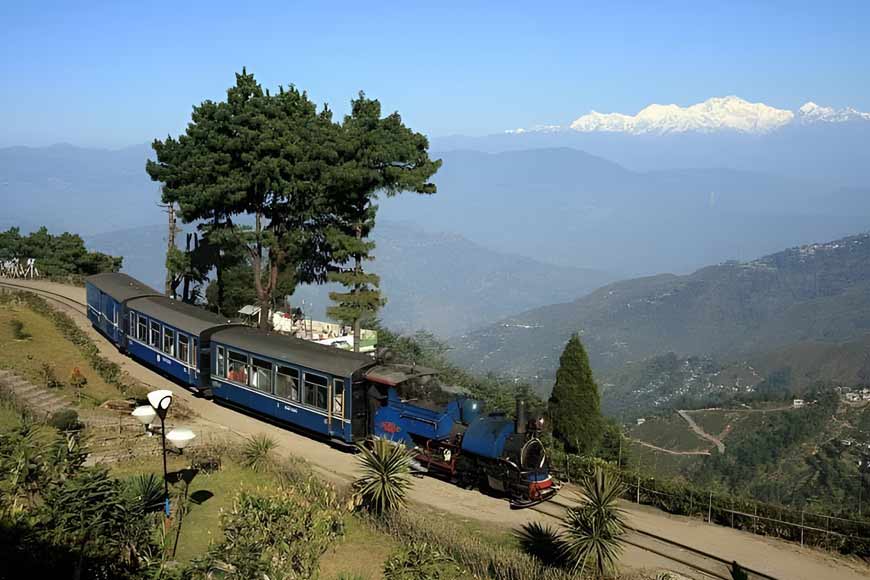The toy train of Darjeeling: A journey of dreams and hard work - GetBengal story

Darjeeling holds a permanent place in everyone's heart. The hills, the cool wind, the smiling face, the smell of tea leaves – all is pure magic! But among everything that is beautiful, there is one thing that shines bright like a jewel — the Darjeeling Himalayan Railway, more commonly referred to as the toy train. It is not just a train; it is a story of dreams, struggle and stunning design.
When we observe the small blue train climbing the hills at its deliberate pace, it seems basic. But behind its small form reveals a remarkable story about being engineering geniuses. The journey of building the toy train began in 1879, at the time, to build a railway in the mountains seemed almost impossible. There were no machines, or computers that could have been used to assist the constructors. They relied on the skill, strength, and imagination of the men and women who made it possible.
The designers encountered a significant issue - the steepness of the mountain posed a challenge for a conventional train to travel across. They would need to depart from traditional train design. Engineers had a unique idea of what was termed a "loop." The design included the track bending and looping back on itself, which allowed the train to climb up while not slipping back down. One of the most well-known examples of this design is the Batasia Loop, near Darjeeling. When the train passes through the loop, the train stays level and rises up while ultimately making a full loop. After a brief ride through the loop, the train rises up further in the line of sight of the snow-covered Kanchenjunga — blinding in its beauty!
The tracks are also really very narrow -- just two feet in width, hence the name narrow-gauge railway. This enabled the engineers to lay the rails fairly easily in the winding hills and tight turns. The bridges used simple but stout iron and stone construction to endure the rain, cold weather, and landslides. The stations had small roofs and wooden walls with big windows to allow passengers to see the mountains while waiting in a simple but elegant building.
Every component of the toy train - from the tiny wheels to the steam engine - has been constructed with precision. The train’s steam engine is one of the oldest still in operation in the world. It relies on coal as fuel to create steam, which is what creates the charming puff of white smoke. The sound of its whistle reverberating throughout the hills is reminiscent of music — the music of history.
After two years of hard work, the toy train arrived at the Ghum station on April 4,1881. Ghum is India’s highest altitude railway station at 7,407 feet above sea level; hence, we were treated to yet another engineering and architectural challenge from the Darjeeling Himalayan Railway. People from all around the world came to witness how the little toy train could manage to climb all those high hills!
Currently, the toy train is no longer only a means of transport; today, it is a UNESCO World Heritage Site, in recognition of India's engineering and cultural heritage. It attracts travelers from all parts of the world who want to experience the magic of the toy train by taking photographs, waving to children beside the tracks, or simply taking their time through the clouds and tea gardens.
The story of the toy trains has a wonderful purpose reminding all of us that, in order to reach each success, time, patience, and creativity must be applied. And just like the builders of the railway achieved success, you can accomplish every single thing you desire in your life through hard work and by pursuing your dreams. Even this toy train continues to chug up the hills every day in the spirit of beauty, determination, and all that is tied to the love of Place, in Darjeeling: not just the people.










